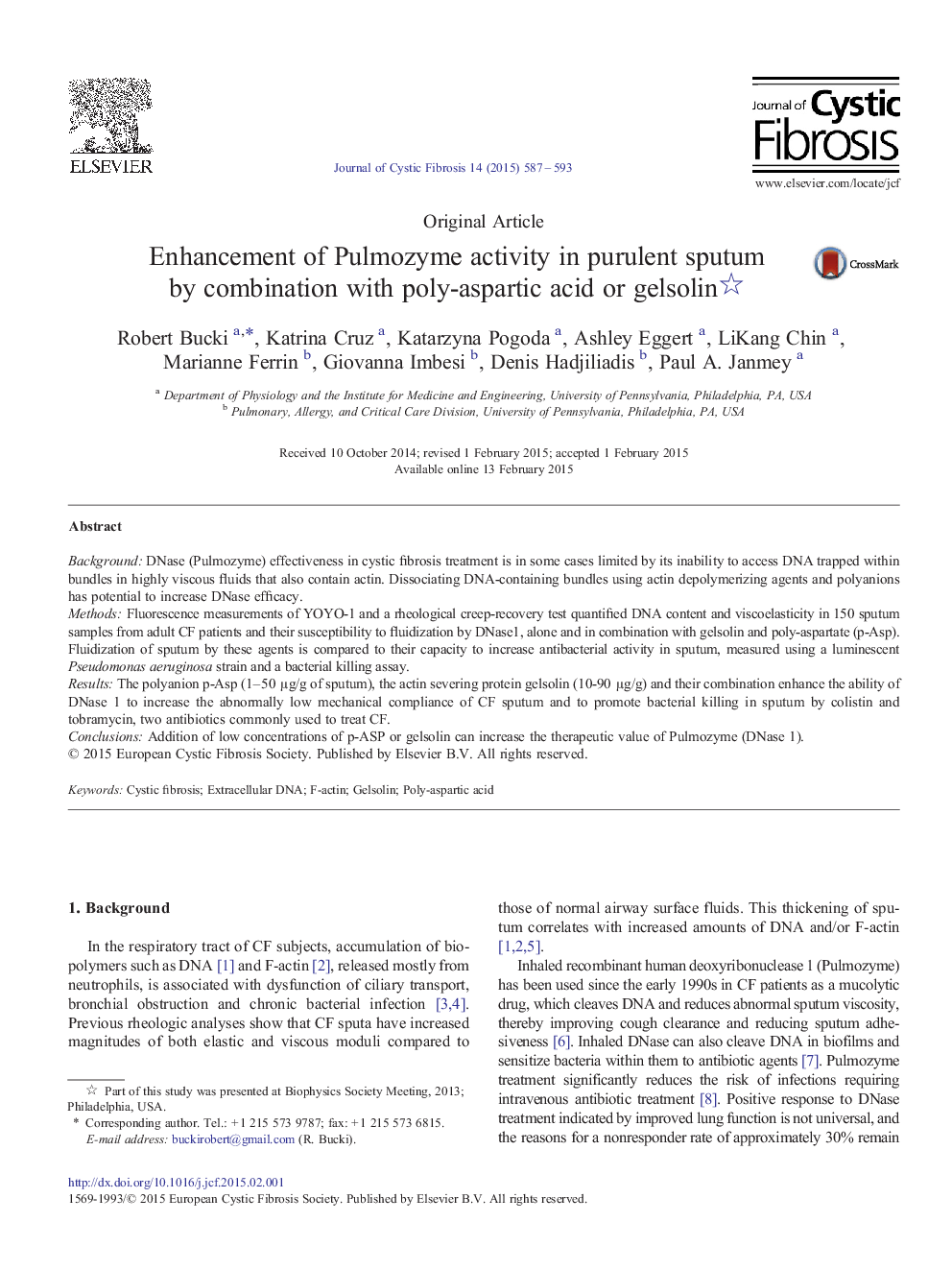| Article ID | Journal | Published Year | Pages | File Type |
|---|---|---|---|---|
| 4208087 | Journal of Cystic Fibrosis | 2015 | 7 Pages |
BackgroundDNase (Pulmozyme) effectiveness in cystic fibrosis treatment is in some cases limited by its inability to access DNA trapped within bundles in highly viscous fluids that also contain actin. Dissociating DNA-containing bundles using actin depolymerizing agents and polyanions has potential to increase DNase efficacy.MethodsFluorescence measurements of YOYO-1 and a rheological creep-recovery test quantified DNA content and viscoelasticity in 150 sputum samples from adult CF patients and their susceptibility to fluidization by DNase1, alone and in combination with gelsolin and poly-aspartate (p-Asp). Fluidization of sputum by these agents is compared to their capacity to increase antibacterial activity in sputum, measured using a luminescent Pseudomonas aeruginosa strain and a bacterial killing assay.ResultsThe polyanion p-Asp (1–50 μg/g of sputum), the actin severing protein gelsolin (10-90 μg/g) and their combination enhance the ability of DNase 1 to increase the abnormally low mechanical compliance of CF sputum and to promote bacterial killing in sputum by colistin and tobramycin, two antibiotics commonly used to treat CF.ConclusionsAddition of low concentrations of p-ASP or gelsolin can increase the therapeutic value of Pulmozyme (DNase 1).
